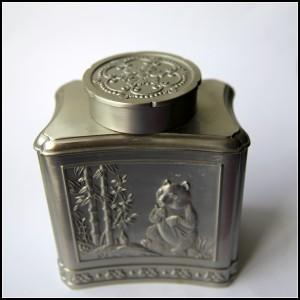One question that frequently pops up in conversation is “what’s the shelf life of tea” and as with most answers to questions like this, it depends on the type of tea as well as how the tea is store.
Storage of Tea
As mentioned on several occasions, what causes deterioration in tea leaves are the following elements:
i) Oxygen
ii) Moisture
iii) Light
iv) Heat
v) Other odors
While certain teas- notably Pu-er- require a bit of oxygen and some moisture to age, by-and-large, how long you can keep your teas depends on how you store it.
To illustrate this point, take some green tea and just leave it in the open. Exposed to oxygen and moisture, within a week, the difference is readily discernible. The lush green leaves turn dark, there is a stale smell, to say nothing of the fragrance.

In addition, the packaging of the tea should be of sufficient thickness and non-permeable else no matter how tight the packaging is resealed, it’s still futile.
You will notice for all our teas (except for Puer or those vacuum sealed) we pack with oxygen absorbers to preserve the freshness further.
For green teas, we go one step further and added a desiccant on top of the oxygen absorber since green teas are more finicky with storage.
Heat is also an important factor- noticeably in green tea. Research has shown that with every 10⁰C increase in temperature, the rate of ‘browning’ in green tea increases by 3-5 times. At the same time, increase in temperature accelerates enzyme activity which leads to staleness.
For fun, you can do some simple calculation to illustrate the importance of storage.
Assuming the monthly degradation of green tea stored at 5⁰C can be measured as X.
Hence a 15 month old green tea would have a degradation of 15X
A 5 month old green tea stored at ambient temperature of 25⁰C is expected to have 8 times (estimated based on average 4 times per 10⁰C) the degradation, hence degradation is 5 months x 8 = 40X which is significantly more than the 15 months old green tea.
One can only imagine the horror that transpired when the tea is stored in the kitchen cabinet, where the steam of the kettle, rice cooker and other sources of heat which serves to increase enzyme activity further.
To keep green tea fresh, it is recommended to be stored below room temperature- with a host of provisos listed here.
How Long Does it Last if ‘Properly Stored’
Even with the lengthy caveat of ‘proper storage’ above, teas don’t last forever.

Yellow teas don’t need to be refrigerated but in general will last about 18-24 months from harvest.
For white and dark teas, in general there is no real expiration date, as long as properly stored. In fact, in certain cases, it is considered to improve with age.
For black teas, in general there is no degradation within 3 years. Beyond which the aroma may fade somewhat but as long as it doesn’t smell musty or moldy, it can still be consumed.
With oolong teas, the answer gets a bit tricky, as you would expect from the most diverse category of tea.
For the extremely lightly oxidized and roasted ‘green style’ Minnan and Taiwanese Oolongs, they are even more finicky than green tea as the moisture content is higher whilst the oxidation is only marginally higher. Stored below room temperature as well, in general they are consumed within 6-12 months.
For mid-roasted teas, in general 2 years from production is a general guideline but ‘mid’ of anything is quite an arbitrary description. ‘Mid-high’ could last longer and vice-versa.
For high-fired teas, essentially they can last decades like white and dark teas. I had the fortune of enjoying really old Yanchas before and the joy is unspeakable. But without question those are stored by tea aficionados.
For most teas, a good test would be the brittleness of the dry leaves which would be indicative of the moisture content. In some cases, well-stored teas are powdery which testifies to their dry-ness.
See other articles on Selection and Storage of Tea
